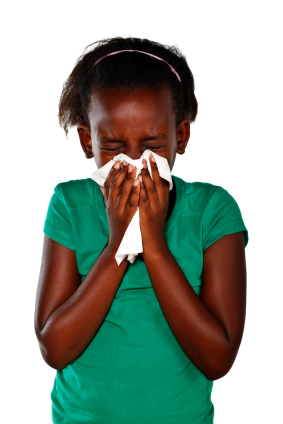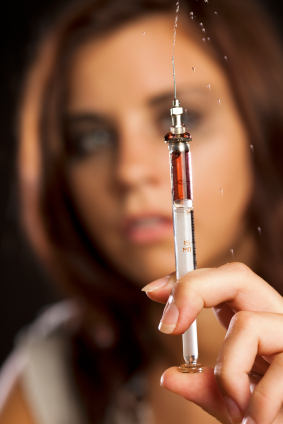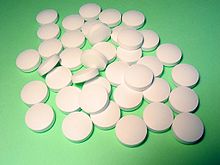This article sets out to describe the origin of influenza pandemics, the current global situation with respect to H5N1 and what we can do to reduce morbidity and mortality if and when a pandemic hits. The predicted impact of such a situation can be found in the Department of Health Influenza Pandemic Contingency Plan.
Contents
- Introduction
- What is influenza?
- What is a pandemic?
- So where are we now?
- So what can we do?
- Veterinary measures
- Vaccination
- Antiviral drugs
- Treatment
- Post-exposure prophylaxis
- Public health measures
- Conclusions
Introduction
Of course, we shouldn’t forget that this is not the first time a spectre of devastating pandemic has grabbed headlines and altered government policy: in 1976 the highly hypothetical suggestion of a ‘Swine Flu’ outbreak drove the American administration to initiate a population - wide vaccination campaign. Ultimately there was no pandemic – just a lot of people with Guillain-Barre secondary to the vaccine. The current panic should therefore be considered with that note of caution in mind.

This article sets out to describe the origin of influenza pandemics, the current global situation with respect to H5N1 and what we can do to reduce morbidity and mortality if and when a pandemic hits. The predicted impact of such a situation can be found in the Department of Health Influenza Pandemic Contingency Plan.
What is influenza?
Influenza is a RNA virus with eight individual segments of genetic material inside a protein shell and a host-derived lipid membrane. Influenza C causes very mild, sporadic disease only; influenza A and B both cause yearly epidemics, but only A has ever been known to cause a pandemic: the rest of this discussion will thus focus on influenza A.
There are two significant surface viral proteins: haemagglutinin, which mediates binding to the host cell, and neuraminidase, an enzyme which ‘detaches’ the progeny virus from the infected cell (and against which the new antiviral drugs are targeted). The type of haemagglutinin and neuraminidase confer the ‘H’ and ‘N’ number of the virus – i.e. the current strain of interest is H5N1, while the 1918 pandemic (‘Spanish flu’) was H1N1. So far only H1–H3 (out of a total of 16 described) and N1 – N2 (out of a total of 9) are established in humans; the others exist primarily in birds.

The virus spreads from person to person via airborne droplets and by respiratory mucosal contact with contaminated hands or surfaces. Adults are infectious from just before until 4-5 days after the onset of symptoms. Children may shed virus for up to 14 days and immunocompromised individuals for up to 21 days. The incubation period is usually 18-72 hours.
The virus invades airway and respiratory tract cells, eliciting an inflammatory and cytokine response which is responsible for most of the symptoms. Presenting complaints are well known: of note is the often very abrupt onset of illness.
Usually influenza is a seasonal infection whose frequency peaks in the winter; it predominantly affects the very young, the elderly, people with chronic diseases (asthma, heart disease, diabetes etc) and exposed health care workers. A typical annual incidence would be 5 – 10% of the population. The case fatality rate is approximately 0.37%, which equates to about 12,000 people per year in the UK1: most deaths are due to complications (especially secondary bacterial pneumonia).
What is a pandemic?
Influenza A and B exhibit ‘antigenic drift’, whereby the composition of the surface H and N proteins gradually changes via random genetic mutation (under selective pressure from human immune responses and / or antiviral drugs). This is why the vaccines have to be re-formulated and administered every year, to target the dominant circulating antigenic strains of virus that have arisen since the previous year.
Pandemics are caused when a ‘new’ strain of virus – to which the entire global population’s immune systems are naïve – appears in humans and acquires the ability to transmit readily from person to person. This occurs via two major mechanisms: ‘adaptive mutation’ (the same process that gives rise to antigenic drift), whereby an animal virus gradually adjusts to humans, and ‘reassortment’ – an exchange of genetic segments between the viruses of different species to create an entirely novel structure (eg avian H3N8 combines with human H2N2 to form ‘new’ H3N2). The latter mechanism, resulting in abrupt antigenic changes or ‘antigenic shift’, is generally thought to be of greater significance in pandemic aetiology than the former. History suggests that these reassortment events most probably occur in South – East Asia or China: here, dense populations of humans, poultry and pigs (which also suffer influenza) live in close proximity, such that one individual may simultaneously be infected with both an avian and a human strain of virus.
In contrast to seasonal influenza, a pandemic can occur at any time of year, and spreads more widely and rapidly. Based on evidence from the last century, we estimate a clinical attack rate of approximately 25% of the population, with serological evidence of exposure in a further 25%. Case fatality rates in 1957- 1958 (‘Asian Flu’) and 1968 – 1969 / 1969-1970 (‘Hong Kong Flu’) were broadly similar to seasonal influenza, but of course overall mortality was much higher (37,500, 31,000 and 47,000 deaths in the UK; worldwide approximately 1-2 million in each wave). The 1918-1919 ‘Spanish Flu’ killed many more people (200,000 in the UK, and over 20 million worldwide); however, it is important to remember the context of a population recovering from World War I, and whose hospitals lacked intensive care and antibiotics.
Two points are worth bearing in mind: pandemic flu tends to exhibit a somewhat skewed predisposition towards younger people, and we have often witnessed multiple ‘waves’ of illness, with the subsequent waves often being more severe than the first.
So where are we now?
H5N1 is an avian virus, which is now considered endemic in Asia. Despite enthusiastic attempts at culling poultry whenever a case is identified, it seems that the virus will not be eliminated. There are several reasons for this:
- It has become established in wild migratory birds
- Ducks do not always suffer clinical illness, but can harbour the virus and excrete large quantities, thereby providing a ‘silent reservoir’
- Reporting is disincentivised in poor Asian countries, because their governments are unable to adequately compensate farmers for culled animals (the current agricultural losses are estimated at US$10 billion)
Within its avian hosts, H5N1 exhibits high pathogenicity and is easily transmitted. Its geographical and host ranges are expanding, and it has crossed the species barrier to humans on several occasions4. All that is required now for a pandemic is improved transmissibility between humans.

The first human cases were identified in Hong Kong in 1997: at that time, efficient culling of poultry and public health measures controlled any spread. However, since late 2003 new human cases have been reported from Vietnam, Thailand, Cambodia and Indonesia: the total as of 1/11/05 was 1226. The median age of cases ranges from 9.5 to 22 depending on the country. The vast majority of cases have been transmitted directly from birds to humans: suggested risk factors include plucking / preparing diseased birds, handling infected fowl and possibly consumption of duck blood or undercooked poultry. Currently there have been no cases of H5N1 detected in UK domestic or wild birds, and it is entirely safe for people to continue to prepare and consume poultry in this country.
Washing hands after handling raw meat and ensuring that poultry is well cooked are of course basic elements of food hygiene and should still be encouraged. The government has banned the import of live birds and certain bird products from countries with outbreaks, in order to delay the appearance of the virus here1. If and when it does reach birds in the UK, the impact on poultry farming from enforced culls or modifications to working practices may be considerable. UK residents or visitors who have been to endemic areas are of course at risk (albeit minimal) of contracting H5N1: if somebody presents with an influenza-like illness within 7 days of close contact with birds in an affected country, the diagnosis should be considered. Many hospital Trusts now have guidelines for such circumstances, and PCTs will either disseminate these or develop their own: if in doubt, contact your local Virology Department or Infectious Diseases specialist. If patients are planning to travel, advise them to avoid contact with birds (especially live animal markets and poultry farms). Upon their return, they should remain vigilant for any symptoms (especially fever) and present promptly to a healthcare provider if they suspect infection.
Early studies suggest that the incubation period may be longer for H5N1 than for usual epidemic influenza A strains, in the range of 2 to 5 days. Of note is the surprising frequency of diarrhoea seen so far in human cases of H5N1. It is also important to recognize the well-described acute encephalopathic presentation of influenza (confusion, coma, seizures). Most hospitalized cases have suffered a primary viral pneumonia rather than bacterial superinfection, and many go on to develop ARDS or multiorgan failure. Current case fatality stands at 50 – 55%, although this is almost certainly an overestimate since milder cases in affected countries would not contact healthcare services. The effectiveness of antiviral drugs or steroids has not been firmly established, but most people are probably presenting too late for any useful intervention anyway.
Person-to-person transmission of avian influenza almost certainly has occurred, but only via very prolonged and close contact (e.g. child to mother). However, recent enhanced surveillance has led to the detection of mild human cases, and there is PCR / serological evidence of infection in a small percentage of asymptomatic contacts. We are also seeing infections in older adults, and an increased number / duration of family clusters in Vietnam. These data suggest that ‘adaptive mutation’ may be bringing the virus closer to efficient human transmissibility... and many authorities now think another pandemic is inevitable.
But this time it’s different. On the negative side, increased air travel will spread the virus more quickly, and modern medicine has created a larger population of vulnerable people (transplant recipients, chemotherapy patients etc). But against this we have better hygiene and nutrition, improved diagnostics and supportive management as well as drugs against influenza. Furthermore, we have been warned in advance and can intervene early – provided we support Asian surveillance and healthcare systems.
So what can we do?
Interventions include those that try to avert the pandemic in the first place, those that aim to delay or limit its spread and measures to reduce morbidity and mortality.
Veterinary measures
These include culling of birds, vaccination of poultry (which is being employed in certain areas despite not being currently recommended by international regulatory authorities) and education of farmers in South-East Asia. However, they involve changes to traditional farming methods and restructuring of whole industries – with time-frames measured in years. And the presence of the virus in migratory birds and ‘silent ducks’ (see above) means that elimination of H5N1 is probably not a realistic prospect.
Vaccination
The gold standard for population protection, influenza vaccines have been shown to reduce infection rates by up to 70-80% and deaths by 40%.

Current vaccines are trivalent, manufactured against the three major circulating viral antigens (2 influenza A and 1 influenza B); they are (perhaps paradoxically) grown in hens’ eggs, and the entire process takes around 6 months. Although the current vaccines confer no protection against avian H5N1 influenza, vaccination is nevertheless recommended for:
- Those who may potentially be exposed to H5N1, to prevent simultaneous infection with human and avian strains which could result in reassortment. This includes travellers to affected countries.
- At-risk individuals as usual.
Large-scale manufacturing of vaccine against avian H5N1 is not considered appropriate, because any eventual human pandemic strain will be antigenically distinct from those currently circulating in birds. Nevertheless, libraries comprising small quantities of candidate vaccines are being assembled in case one provides a ‘reasonable match’ to the pandemic strain and can therefore act as a ‘stop-gap’ for priority groups such as healthcare workers.
As soon as the pandemic virus is definitively identified, all manufacturers will switch to creating a vaccine. However, the process will still take some time (decreased availability of hens’ eggs is a genuine concern), and the ‘unprimed’ population may need 2 doses. Ideas to speed up the manufacturing include pre- emptive ‘fast-tracking’ of paperwork, as well as more controversial ideas such as use of mammalian cell cultures or even genetic engineering. Once the vaccine exists, priority will be given to healthcare staff and providers of emergency services – followed by ‘at-risk’ individuals (on account of medical history or belonging to the demographic group which appears most susceptible to the pandemic).
Antiviral drugs
H5N1 already possesses resistance to inhibitors of viral uncoating (eg amantadine) and so attention has turned to the newer neuraminidase inhibitors, especially oseltamivir (Tamiflu) which is being stockpiled by governments. The manufacturer (Roche) have also donated 3 million doses to the WHO for early containment of a pandemic (see below). It has several potential uses:
Treatment
Oseltamivir needs to be given within 48 hours of the start of symptoms (ideally within 6 hours) to be effective. It has been shown to shorten the clinical course of seasonal influenza A infection by 37%, reduces complications by 67%, reduces hospitalisations by about 50%, ameliorates symptoms by 38%17 and reduces transmissibility. It is currently licensed in the UK for ‘at-risk’ patients (i.e. the elderly and those with chronic diseases) presenting within 48 hours with symptoms suggestive of influenza. It is also being given to all patients with known or suspected H5N1 acquired via bird contact. In a pandemic, priority would go to healthcare / other essential workers (Liam Donaldson, personalcommunication), but the government currently aims to build a stockpile of drug sufficient to treat all the predicted 15 million cases in the UK (the feasibility of this has not yet been established).
Post-exposure prophylaxis
This could be a strategy to interrupt or slow the spread of virus at the start of a pandemic. Taken in half treatment dose, oseltamivir provides up to 89 percent overall protective efficacy against developing clinical influenza in close contacts. The drug must be given to all contacts of a known case (including healthcare workers), and this should be combined with area quarantine and movement restrictions. It is generally accepted that this is merely a ‘holding measure’ and will not actually prevent the spread of a pandemic virus. Once a pandemic has started in earnest, the only role for PEP might be in limiting the impact on vulnerable populations (eg nursing homes, immunocompromised patients, those already hospitalised etc). I Pre-exposure prophylaxis Although not currently recommended in any national strategies, taking low dose oseltamivir to prevent clinical illness does appear to work (in one study volunteers took oseltamivir or placebo during the flu season – only 1.2% of treated vs 4.8% of the placebo group developed influenza). Safety data over a 6 week period are acceptable, and this strategy could be considered for healthcare workers. It is not advised that the public stockpile oseltamivir for this purpose however – for reasons detailed below. Unfortunately, oseltamivir is not without its problems, for example:

- Early intervention with aggressive post- exposure prophylaxis will be difficult. To be successful, this would require an unlikely constellation of factors:
-
Relatively low initial transmissibility.
-
A geographically limited area of emergence.
-
Rapid detection and reporting of the virus.
-
Rapid mobilisation of drugs from the stockpile.
-
Effective restriction of local population movements (and remember the virus can be transmissible from shortly before up to 21 days after onset of symptoms).
-
-
Manufacturing supply is limited, and it will take at least 9 months just to meet current demands for oseltamivir1. The UK has ordered 14.6 million treatment courses, which should cover all cases BUT:
-
Pre/post-exposure prophylaxis will use up some doses.
-
Treatment will need to be initiated on the basis of a clinical diagnosis, rather than waiting for the results of virological investigation. Inevitably, this will mean that oseltamivir is sometimes taken unnecessarily because of overdiagnosis of other febrile illnesses as being “flu”.
-
If patients are not required to see a healthcare professional before receiving oseltamivir, not only will this exacerbate the ‘overdiagnosis’, but there may also be a temptation to request doses even if not ill - as a ‘precautionary measure’.
-
The estimated 25% attack rate may be an underestimate.
-
There is some evidence that avian H5N1 requires larger doses and longer courses of oseltamivir than currently are licensed for seasonal influenza4. This might also apply to a pandemic human strain arising from avian H5N1
-
-
Resistance to oseltamivir can result from single amino acid substitutions. (Sensitivity to zanamivir is retained.) In one study this was seen in up to 16% of H1N1 in children who received oseltamivir (although the official figures are 0.4% of adults and 4% of children, derived from extensive product use in Japan). Resistance has also been documented in H5N1, so far in only one Vietnamese patients14, but widespread resistance would nevertheless impact massively on contingency plans.
-
Side effects can occur, including nausea and vomiting in up to 10%. Although the frequency of hypersensitivity reactions is only 1/1,000 to 1/10,000 – while for hepatitis and Stevens-Johnson syndrome it is less than 1/10,00018 – this will still equate to large numbers of patients if 15 million treatment courses are taken.
These factors show why people should be discouraged from stockpiling oseltamivir and taking it prophylactically. Such practices will promote viral resistance (rendering the drug useless anyway), deprive at-risk groups and poorer countries of supplies and carry the risk of significant side effects.
Public health measures
On a national level these will include education, especially with regards to self- diagnosis and respiratory hygiene / hand- washing to limit spread. All cases should voluntarily self-quarantine at home, or be isolated in hospital if severely unwell. Initially, contact tracing with quarantine and oseltamivir prophylaxis or early treatment may help to contain the spread, but these measures will not be helpful in a full-scale pandemic. People should avoid travelling to affected areas early in the pandemic, and enforced travel restrictions are being considered. Other ideas suggested include school closures, prohibiting mass gatherings, furloughing of non-essential workers and staff rosters to minimise people mixing. On an international level, affected regions will conduct ‘exit screening’ of individuals leaving the country with questionnaires, health declarations and even thermal scanning devices. Some countries are also considering ‘entry screening’.
Conclusions
H5N1 is a bird disease, and at present poses only a very limited threat to human health. No modification to lifestyle or culinary practices in the UK is required at present. Nevertheless, we should remain vigilant to the diagnosis in returning travellers, and if people are planning to travel to endemic areas they should be encouraged to receive vaccination against human influenza (to minimise the chance of co-infection and subsequent reassortment). When H5N1 reaches the UK, guidelines on when to consider it in patients who have had significant contact with domestic birds will also need to be drafted.
A human influenza pandemic is generally considered to be inevitable at some time in the future, and H5N1 exhibits a number of features which suggest it could give rise to the next culprit strain. Being fore-warned is allowing us to lay down contingency plans in advance, and the use of effective drugs coupled with public health measures should enable us to significantly limit morbidity and mortality.
This article first appeared in Capital Doctor.
A bacterium, virus, or other microorganism that can cause disease.
Full medical glossary


